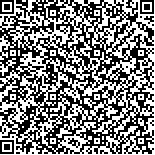| 摘要: |
| 1990年6–9月,从青岛上马镇对虾养殖场患败血症的中国对虾血淋巴内分离到副溶血弧菌25-C菌株,利用平板玻璃纸覆盖技术,获得25-C菌株的胞外产物(ECP),进行成分分析和致病性研究。结果表明,副溶血弧菌25-C菌株的胞外产物具有多种酶活性和溶血活性,是病原菌感染中国对虾的主要因素,单独注射感染即可导致中国对虾的严重发病至死亡,ECP蛋白可以破坏中国对虾血清的体外杀菌活力,提高25-C菌株对中国对虾的致病能力。聚丙烯酰胺凝胶电泳分析结果表明,ECP蛋白中含有23条蛋白带。对具有溶血活性的蛋白组分进行热稳定性测试后,认为有两种溶血因子。经感染分析,发现其中具有热稳定性溶血活性和蛋白酶活性的两组蛋白对中国对虾具有明显的致病作用,可能是决定细菌毒力的主要因素。 |
| 关键词: 副溶血弧菌 胞外产物 中国对虾 溶血活性 蛋白酶活性 |
| DOI:10.11693/hyhz200003007007 |
| 分类号: |
| 基金项目:国家“八五”科技攻关资助项目,85-15-03-03号 |
附件 |
|
| PATHOGENICITY OF EXTRACELLULAR PRODUCTS OF VIBRIO PARAHAEMOLYTICUS TO PENAEUS CHINENSIS |
|
MOU Hai-jin1, LI Yun1, BAO Zhen-min1, YANG Xue-song2, XU Hual-shu1
|
|
1.College of Marine Life Sciences, Ocean University of Qingdao, Qingdao266003;2.Shandong Laizhou Da Hua Fisheries Culture Research Institute, Laizhou261413
|
| Abstract: |
| V. parahaemolyticus 25-C was isolated from the hemolymph of Penaeus chinensis with septicaemia from Shangma prawn culturing farm in Qingdao from June to September, 1990. Its extraellular products (ECP) were obtained, using the cellophane plate technique. ECP protein was partially purified by precipitation with ammonium sulfate, dialysis, extraction of water, concentration with PEG 6000, and filter sterilization. The products were stored at -20°C until required. The protein content, enzyme activities and hemolytic activity of ECP were detected. The toxicity of ECP to P. chinensis and the effect on the bactericidal activity of serum of P. chinensis in vitro were studied. Then the predisposing effect of ECP on the mortality of P. chinensis challenged with V. parahaemolyticus was studied too. By polyacrylamide gel electrophoresis (PAGE), ECP protein was separated and purified further. Biochemical activities and pathogenicity of the purification fractions were detected, and heat stability of the fractions with hemolytic activity was studied.
The results indicate that ECP of V. parahaemolyticus 25-C possessed hemolytic activity and various enzyme activities, such as gelatinase, casease, amylase, lipase, lecithinase and chitinase. It could be considered as one of the main substances of pathogen infecting P. chinensis. By intramuscular injection alone, ECP caused prawn’s diseased and resulted in high mortality. ECP protein of 25-C could destroy the bactericidal activity of prawn’s serum. Pre-infected with ECP protein, the pathogenicity of 25-C increased greatly. Therefore ECP protein could destroy prawn’s physique and promoted the proliferation of bacteria in prawns.
ECP protein gave 23 bands by PAGE. The protein content with hemolytic activity was assayed on its thermal stability and two hemolytic factors were detected. One was thermolabile, destroyed by heating at 70°C for 10 min; the other was thermostable, not inactivated by heating at 70°C or 100°C for 10 min. Infection analysis shows that proteins with thermostable hemolytic activity or proteolytic activity had obvious pathogenic activity to P. chinensis. This may be one of the main factors determining the virulence of V. parahaemolyticus. Other enzymes such as lecithinase, chitinase and lipase, also played some supplementary roles in the process of P. chinensis infection. |
| Key words: Vibrio parahaemolyticus, Extracellular products, Penaeus chinensis, Hemolytic activity, Proteolytic activity |
